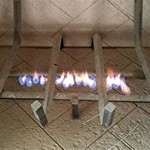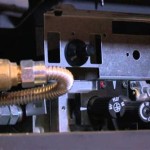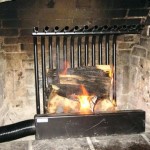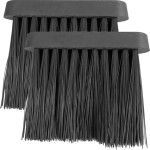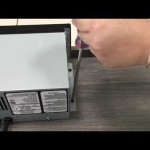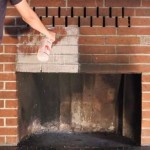DIY Electric Fireplace Entertainment Center: A Comprehensive Guide
An electric fireplace entertainment center serves as a focal point within a living room or home theater space, offering both aesthetic appeal and functional utility. The combination of a simulated fireplace and media storage creates a warm and inviting atmosphere while simultaneously providing a convenient location for housing electronic devices and media collections. Constructing a DIY electric fireplace entertainment center allows for customization to specific dimensions, design preferences, and budgetary constraints. This article provides a comprehensive guide to designing and building a personalized electric fireplace entertainment center.
Planning and Design Considerations
Before commencing the construction process, meticulous planning is essential. This phase involves assessing available space, establishing design parameters, and determining material requirements. The selection of an appropriate electric fireplace insert is a critical initial step, as its dimensions will dictate the overall size of the entertainment center. Available space should be carefully measured to ensure adequate clearance for the unit and comfortable viewing distances from seating areas. In addition, consideration must be given to the placement of electrical outlets and cable management systems.
Design considerations encompass both aesthetic and functional aspects. The style of the entertainment center should complement the existing décor of the room. Common design styles include traditional, contemporary, minimalist, and rustic. The incorporation of storage solutions, such as shelves, drawers, and cabinets, should be tailored to specific needs for housing media components, gaming consoles, and decorative items. The height of the entertainment center should be determined based on the optimal viewing angle of the television screen from the seating position. A lower profile is often preferable for wall-mounted televisions, while taller units may be appropriate for floor-standing models.
The selection of materials plays a crucial role in the durability and appearance of the entertainment center. Common materials include plywood, MDF (Medium-Density Fiberboard), solid wood, and veneers. Plywood offers structural strength and cost-effectiveness, while MDF provides a smooth surface for painting and finishing. Solid wood offers superior aesthetic appeal and longevity, but it is generally more expensive. Veneers can be applied to plywood or MDF to achieve the desired wood grain appearance without the cost of solid wood. The choice of materials will depend on budget, desired aesthetic, and skill level in woodworking.
Detailed blueprints or sketches are highly recommended to visualize the design and ensure accurate measurements. These drawings should include dimensions, material specifications, and assembly instructions. Utilizing computer-aided design (CAD) software can facilitate the creation of professional-looking blueprints and allow for easy modification of the design. The blueprints should also specify the location of electrical wiring and ventilation for the electric fireplace insert to prevent overheating.
Material Selection and Preparation
Once the design is finalized, the next step involves procuring the necessary materials. A comprehensive list of materials should be compiled based on the design specifications. This list will typically include lumber, fasteners (screws, nails, wood glue), finishing materials (paint, stain, varnish), hardware (hinges, knobs, drawer pulls), and the electric fireplace insert itself.
Lumber should be selected based on quality and straightness. Knots and imperfections can weaken the structure and detract from the aesthetic appeal. It is advisable to purchase lumber from a reputable supplier who can provide assistance with selecting the appropriate grades and species. Plywood and MDF should be inspected for delamination and surface imperfections. The thickness of the material should be chosen based on the structural requirements of the entertainment center. Thicker materials are generally more durable but also heavier and more expensive.
Before assembling the components, it is essential to prepare the materials. This involves cutting the lumber to the specified dimensions using a saw. A table saw is ideal for making straight cuts, while a miter saw is useful for angled cuts. Precise measurements and accurate cuts are crucial for ensuring a seamless fit between the components. Sanding the surfaces of the lumber and plywood is necessary to create a smooth finish. Sandpaper with varying grits should be used, starting with a coarser grit to remove imperfections and progressing to a finer grit to achieve a polished surface. The edges of the lumber can be rounded over using a router to create a more refined appearance. Dust and debris should be removed after sanding to ensure proper adhesion of the finishing materials.
Electrical wiring should be prepared in accordance with local electrical codes. A dedicated circuit is recommended for the electric fireplace insert to prevent overloading the electrical system. Wiring should be properly insulated and grounded to ensure safety. A licensed electrician should be consulted if there is any uncertainty regarding electrical work. Ventilation openings should be cut into the back of the entertainment center to allow for adequate airflow around the electric fireplace insert.
Assembly and Finishing
The assembly process typically begins with constructing the frame of the entertainment center. This involves joining the lumber components together using fasteners and wood glue. Screws provide a strong and durable connection, while nails are useful for securing trim and decorative elements. Wood glue should be applied to all joints to enhance the strength and rigidity of the structure. Clamps should be used to hold the components together while the glue dries.
Once the frame is assembled, the plywood or MDF panels can be attached to the sides, top, and bottom. These panels provide structural support and create a smooth surface for finishing. The panels should be attached using screws and wood glue. The edges of the panels can be trimmed with molding to conceal the fasteners and create a more finished appearance. Shelves, drawers, and cabinets can be added to the interior of the entertainment center to provide storage space. These components should be constructed using the same materials and techniques as the frame.
The final step involves finishing the entertainment center. This includes filling any gaps or imperfections with wood filler, sanding the surfaces smooth, and applying a protective coating. Wood filler should be used to conceal screw holes, nail holes, and other blemishes. The filler should be allowed to dry completely before sanding. A primer should be applied to the surfaces before painting or staining to ensure proper adhesion of the finish. Paint provides a durable and opaque finish, while stain enhances the natural grain of the wood. Varnish or lacquer can be applied over the paint or stain to provide a protective layer and enhance the glossiness of the finish.
Hardware, such as hinges, knobs, and drawer pulls, should be installed after the finish has dried. These elements add functionality and aesthetic appeal to the entertainment center. The electric fireplace insert should be installed according to the manufacturer's instructions. This typically involves securing the insert to the frame with screws or brackets. The electrical wiring should be connected to the power outlet, and the ventilation openings should be checked to ensure proper airflow.
Key Point 1: The Importance of Accurate Measurements and Cuts
Achieving a professional-looking and structurally sound electric fireplace entertainment center hinges significantly on the precision of measurements and cuts. Inaccurate measurements can lead to gaps, misaligned components, and an overall uneven appearance. Similarly, imprecise cuts can compromise the structural integrity of the unit, potentially leading to instability or failure. Therefore, investing time and effort in ensuring accurate measurements and cuts is paramount. Using high-quality measuring tools and saws is highly recommended. Double-checking measurements before each cut and taking the time to make clean, straight cuts will significantly improve the final product. It is often beneficial to practice cuts on scrap wood before working on the final pieces.
Key Point 2: Proper Ventilation for the Electric Fireplace Insert
Electric fireplaces, while offering the ambiance of a traditional fireplace without the associated risks and maintenance, generate heat. Insufficient ventilation can lead to overheating, which can damage the unit and potentially pose a fire hazard. Therefore, providing adequate ventilation for the electric fireplace insert is a crucial safety consideration. Manufacturers typically specify the required clearances and ventilation requirements in the installation manual. These specifications should be strictly adhered to. Ensuring that there are adequate openings at the back of the entertainment center to allow for airflow is essential. Furthermore, avoiding the placement of combustible materials close to the unit is critical. Regularly inspect the ventilation openings to ensure they are free from obstructions.
Key Point 3: Cable Management Strategies
An entertainment center is designed to house various electronic devices, including televisions, media players, gaming consoles, and speakers. These devices typically require numerous cables for power, audio, and video connectivity. Without proper cable management, these cables can create a tangled mess that detracts from the aesthetic appeal of the entertainment center and makes it difficult to access and manage the devices. Implementing effective cable management strategies is therefore essential. This can involve incorporating cable routing channels within the entertainment center, using zip ties or Velcro straps to bundle cables together, and employing cable concealers to hide unsightly cables. Labeling cables can also simplify troubleshooting and future maintenance. Consider adding grommets to the back of the unit to allow cables to pass through cleanly and without creating sharp bends.

Diy Electric Fireplace Build

Faux Stone Fireplace Entertainment Center Genstone

Simple Diy Tv Stand How To Make Your Own 72 With Fireplace

Diy Electric Fireplace Tv Stand Entertainment Center Pallet Skid And

Diy Electric Fireplace With Built Ins The Dabbling Crafter

Diy Fireplace Wall With Tv Entertainment Center

Diy Electric Fireplace Build

Simple Diy Tv Stand How To Make Your Own 72 With Fireplace

Diy Electric Fireplace Shiplap Wall Transformation

Diy Electric Fireplace Built In How To Frame And Install The Simply Aligned Home
Related Posts

